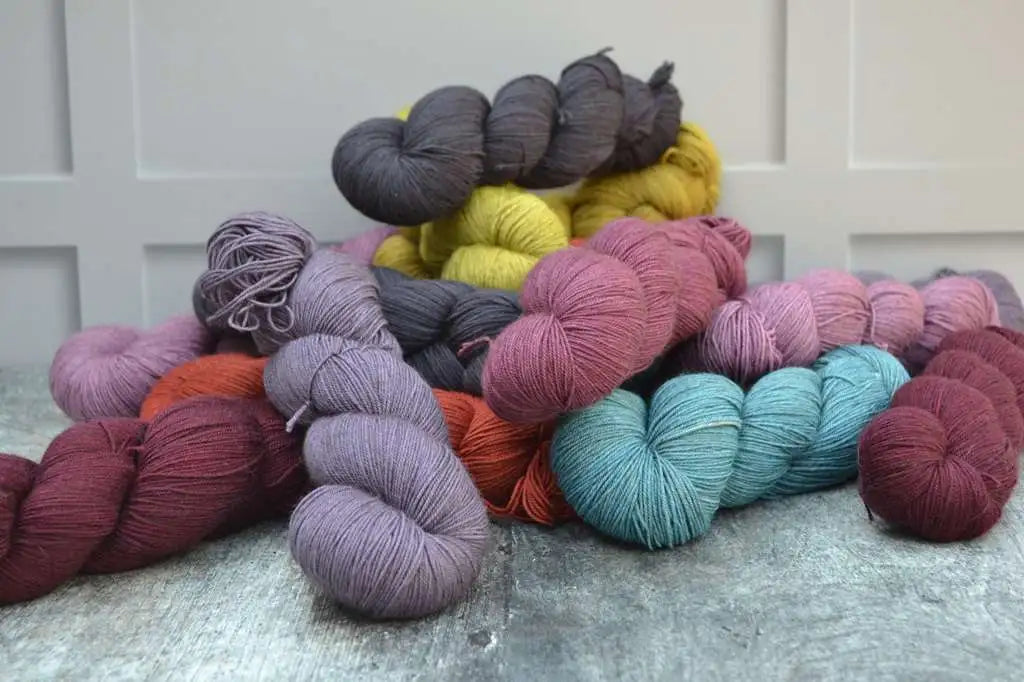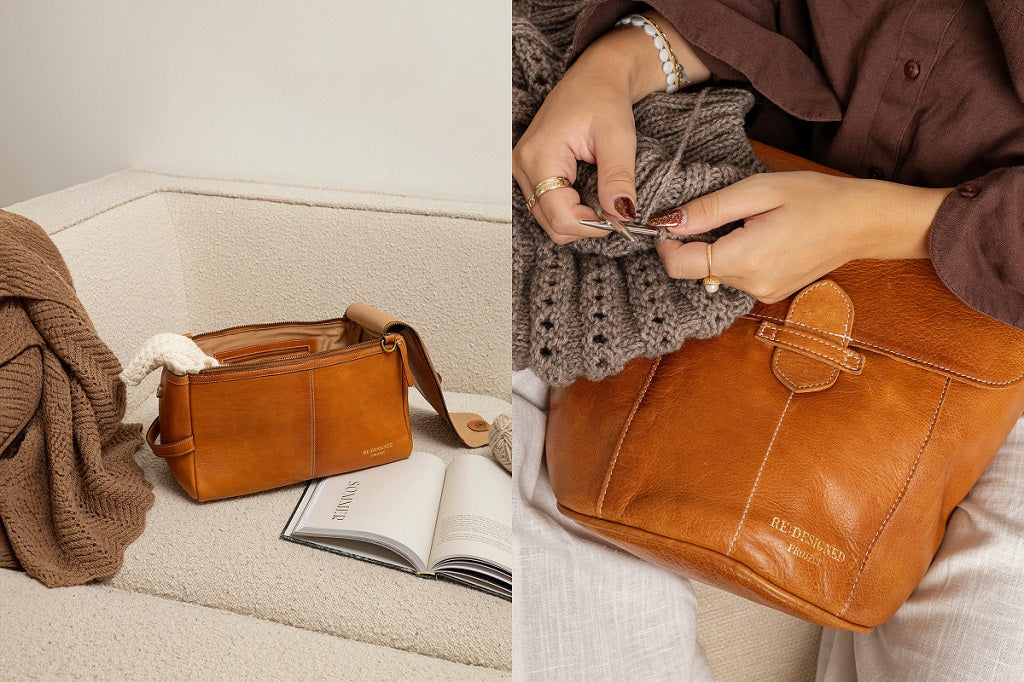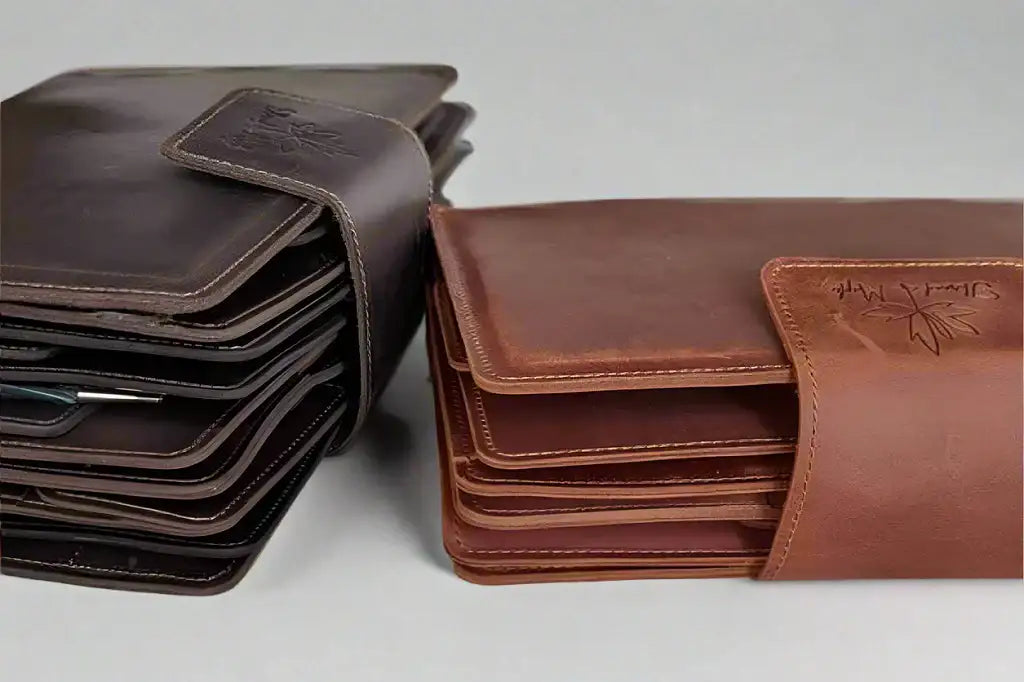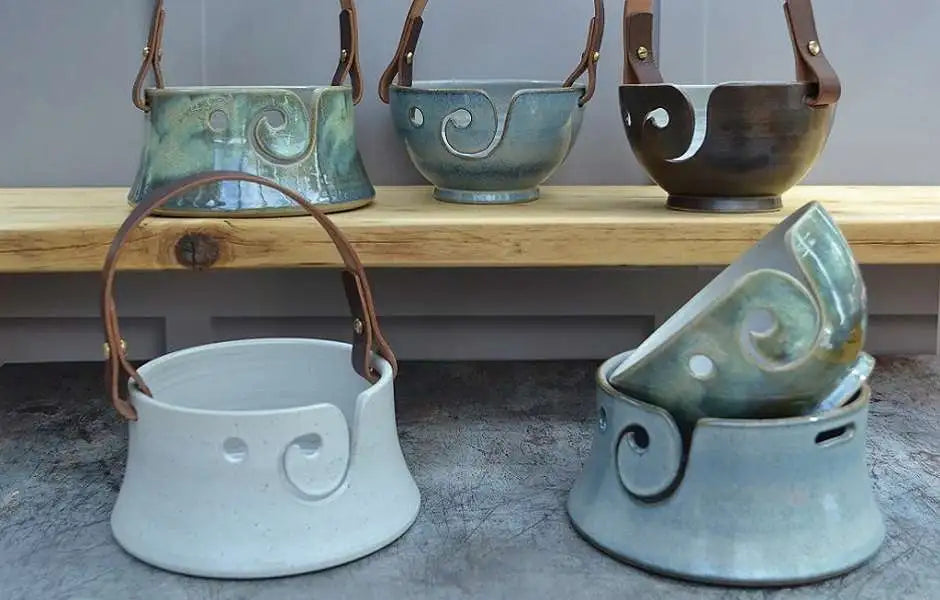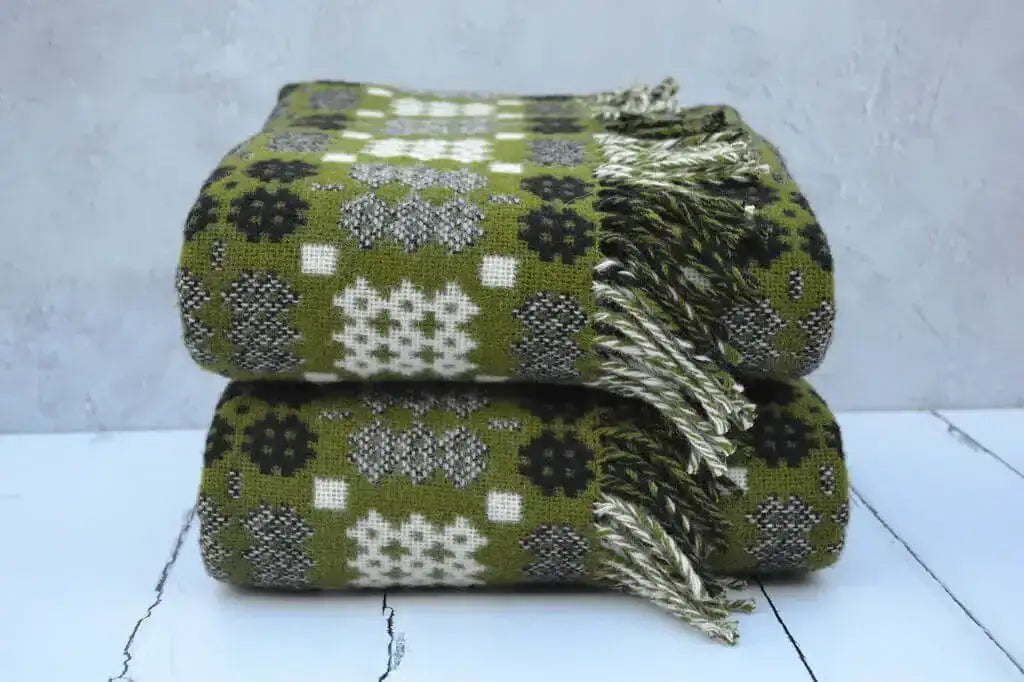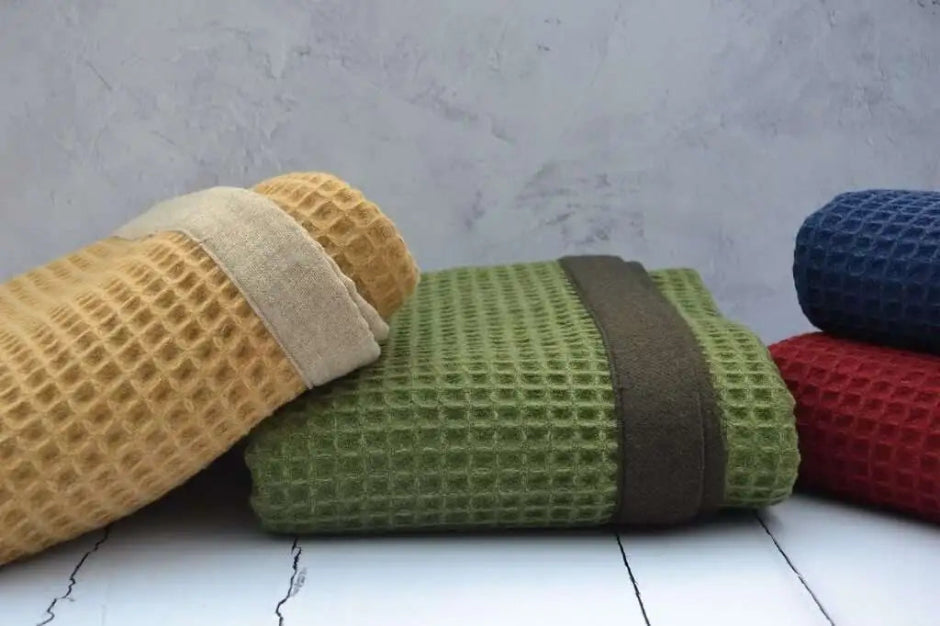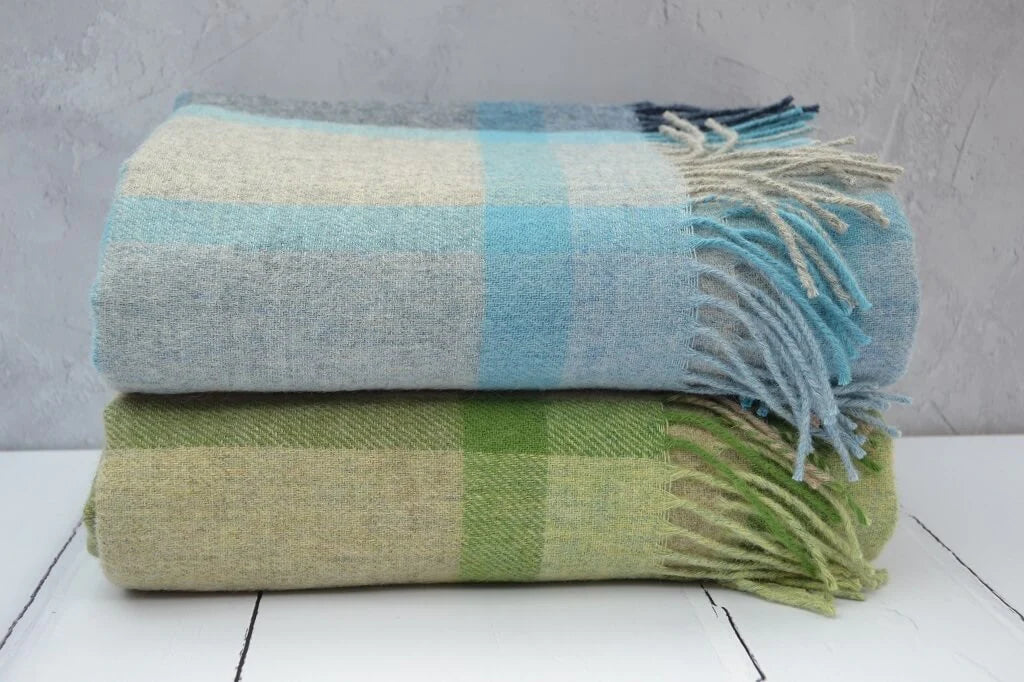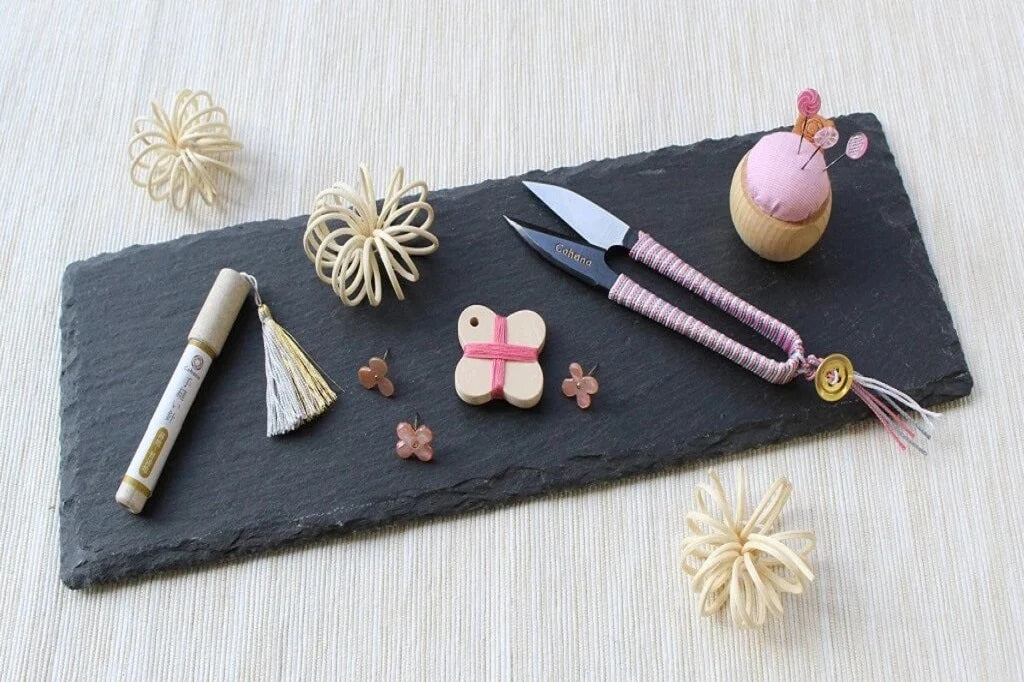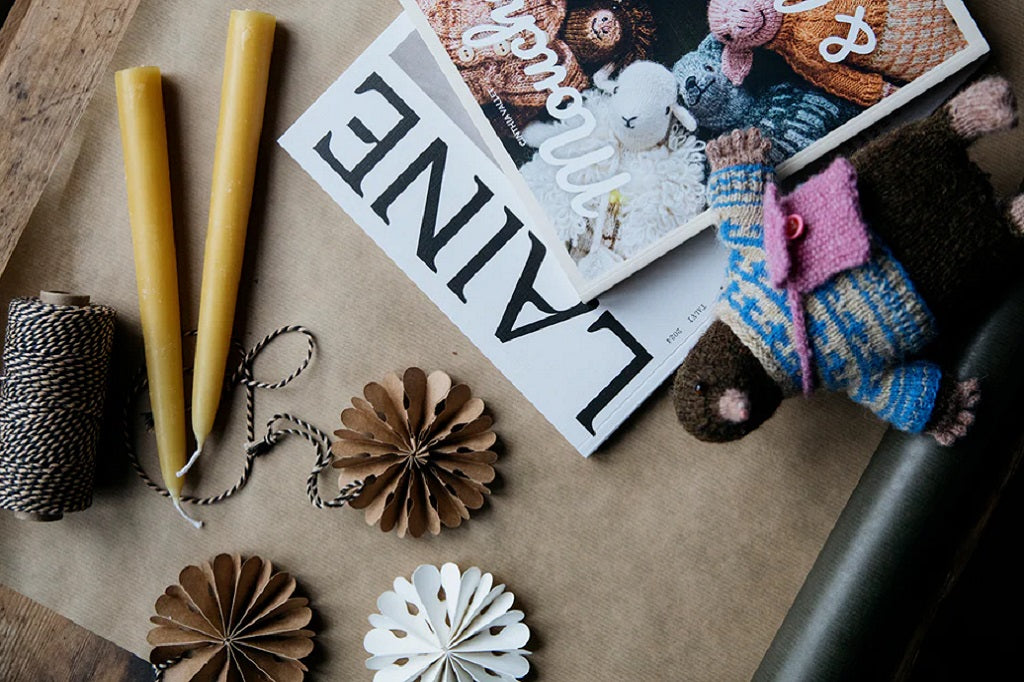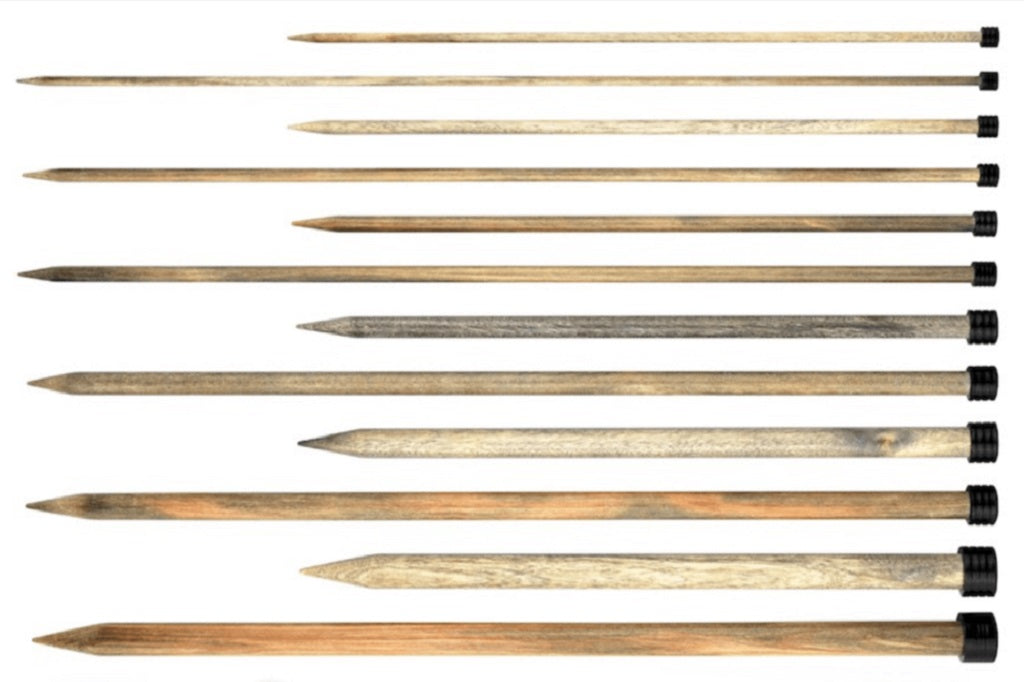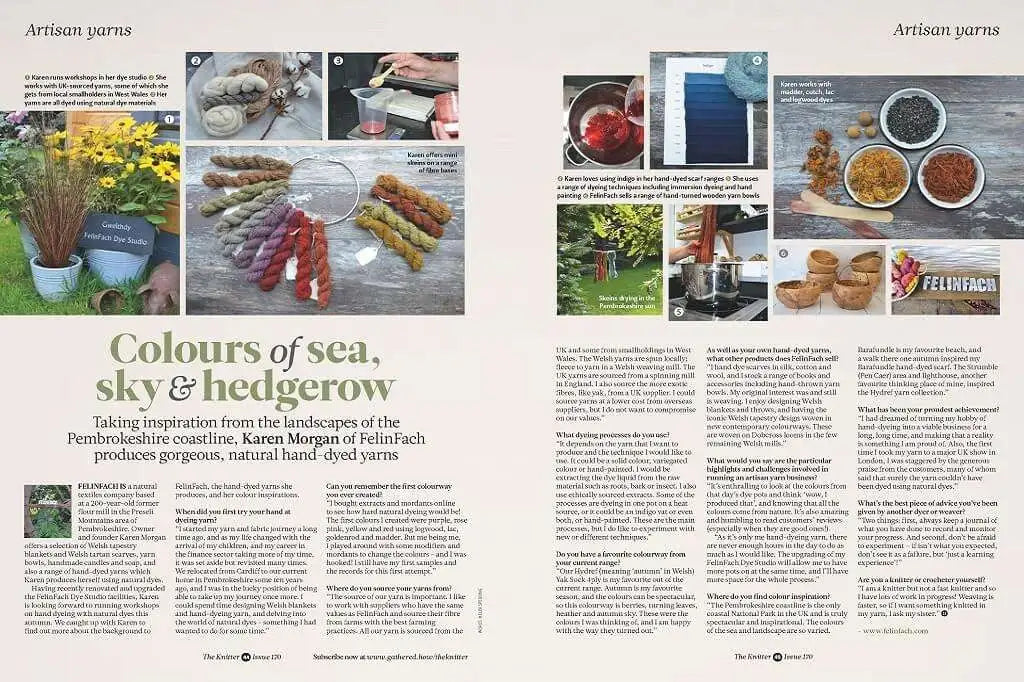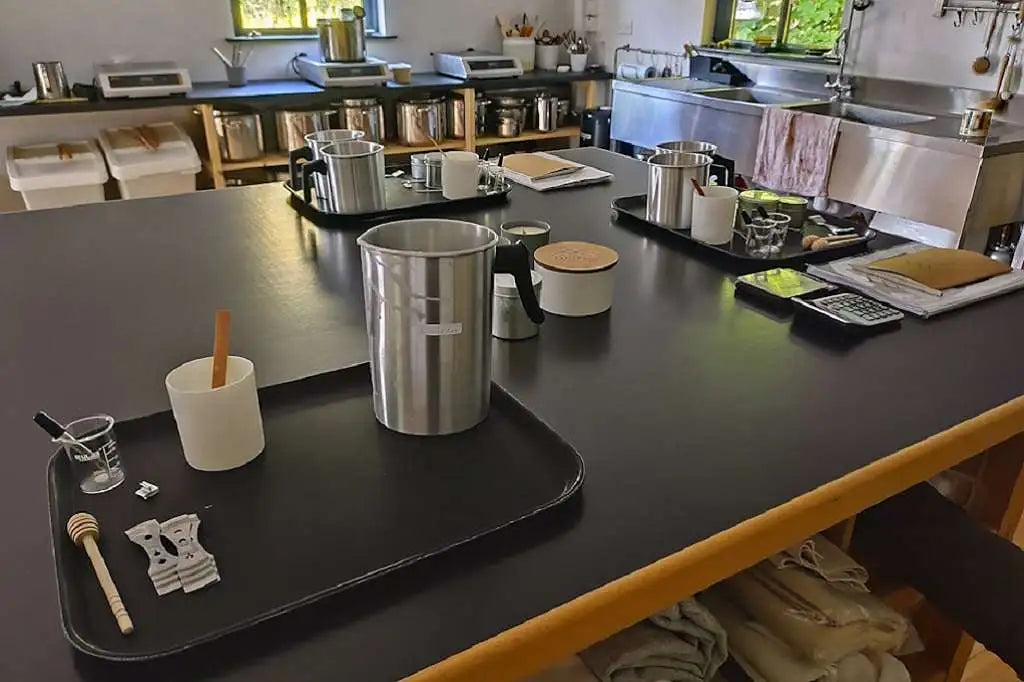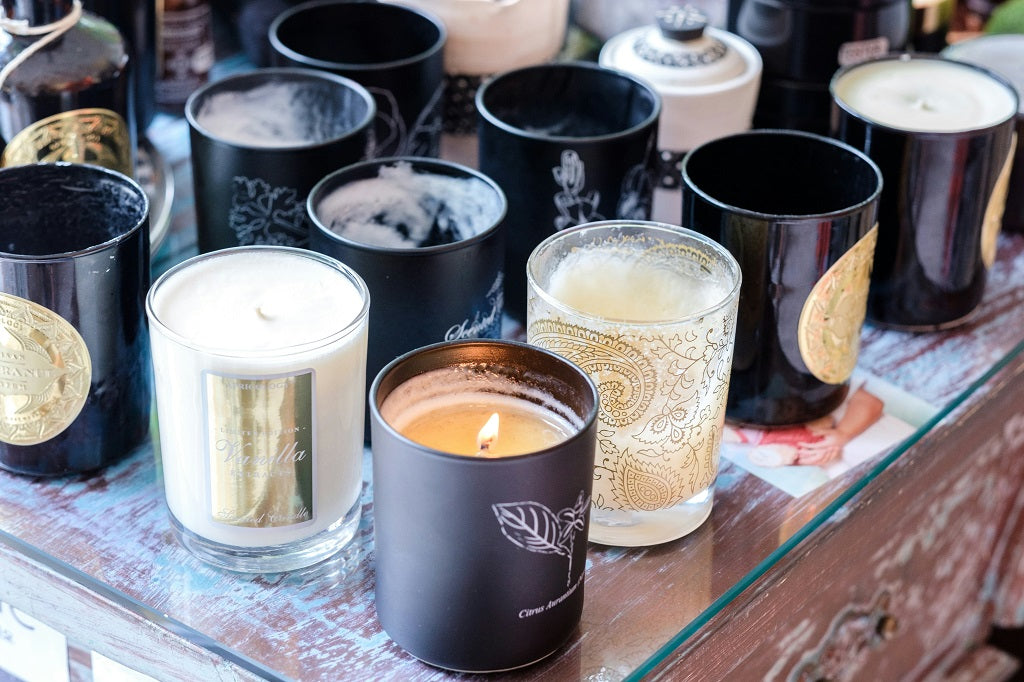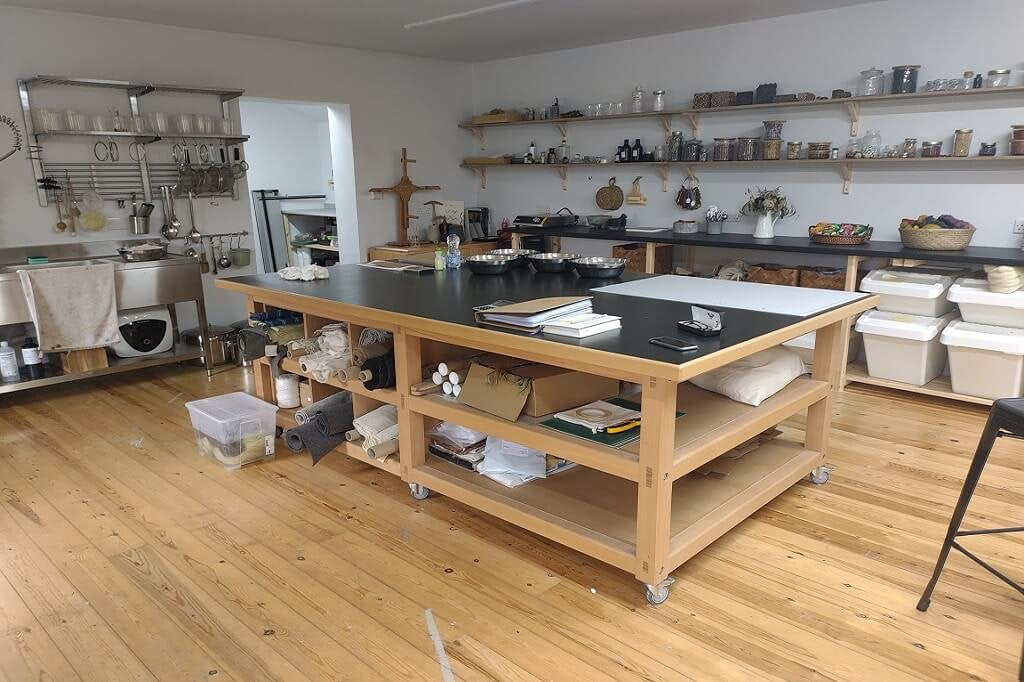Welsh Blankets - History
Welsh Blankets - Summary
Welsh blankets are a treasured part of Welsh culture, celebrated for their unique patterns and expert woven craftsmanship. Dating back hundreds of years, the wool industry was once a key part of Wales’s economy. Although it declined in the 20th century, the tradition has made a strong comeback. Today, Welsh blankets are in high demand worldwide, admired for their warmth, durability, and timeless designs like the Caernarfon Portcullis pattern.
Key Points:
- Rich History: The wool industry shaped Wales’s economy for centuries and remains an important cultural symbol.
- Skilled Craftsmanship: Each blanket is woven on traditional looms, reflecting generations of expertise.
- Modern Appeal: Welsh blankets combine traditional techniques with contemporary styles, making them popular today.
- Sense of Belonging: These blankets capture the feeling of "hiraeth," a Welsh word for homesickness and longing for home.
- Practical and Decorative: Whether used as cosy throws or beautiful decorations, Welsh blankets add charm to any space.
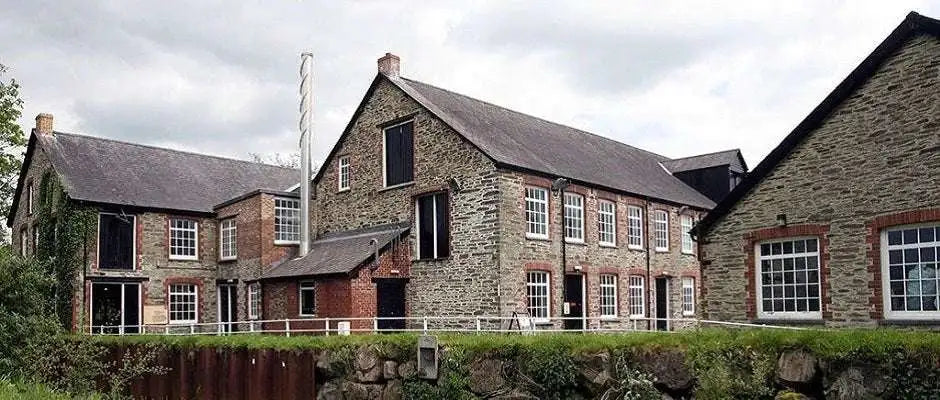
Welsh Blankets History
A Welsh blanket is a modern-day fashion item and they are in huge demand, in Wales, the UK and worldwide. These blankets are woven on traditional looms and are a stylish addition to any room or home, traditional or contemporary.
Welsh blankets have a long history dating back to the 12th century and were at times, the most important industry in Wales. During the 20th century, the industry almost disappeared due to competition from mills in the north of England but today Welsh blankets are a modern-day fashion item. Welsh tapestry blankets are in huge demand, in Wales, the UK and worldwide. These blankets are hand woven on traditional looms in wool by crafts people. They are items of great beauty in any room or home, traditional or contemporary. Nothing says hiraeth more than an iconic Welsh blanket.
Early History from 12th Century
Wales is famous for its wool industry and its blankets and throws from its early history to modern times. The Welsh blankets history is a long one! Whilst sheep farming and the spinning of wool appears in Wales in the pre-historic period, it was not until the 12th century that sheep became an important part of the Welsh economy, spurred on by the establishment of the first Cistercian monasteries in south Wales. During the 13th century came the introduction of water powered Water-powered fulling mills which involved the cleansing of the wool to eliminate oils, dirt, and other impurities, and to make it thicker. The process of spinning and weaving the wool remained a ‘cottage’ industry in the 13th century. It was not until the early 16th century that wool production shifted from south Wales to mid and north Wales. Companies in England, such as the Shrewsbury Drapers Company, began to be involved in the distribution of wool and from the 18th century there was strong demand for cheap, sturdy Welsh material shipped from Bristol, Liverpool, or the Welsh ports to clothe slaves in the British colonies of North America and the West Indies.
Overseas Trade
In the 17th century, exports of wool from Wales accounted for over 60% of all Welsh exports.
Before 1800, there were very few factories in Wales, and almost all production was at home. As trans-Atlantic demand for Welsh cloth grew, growing numbers of people in the rural areas of mid-Wales became dependent on the woollen industry, finding that spinning and weaving gave a larger and more stable income than farming. Some hamlets grew into woollen manufacturing centres.
At first, much of the cloth was shipped via Shrewsbury and London, but later the port of Bristol became the main place from which Welsh woollen goods were shipped across the Atlantic.
Industrial Revolution
During the Industrial Revolution of the 19th century, the Welsh woollen industry was slow to mechanise compared to the mills of northern England. This became a prime reason for its subsequent downfall. When railways reached mid Wales in the 1860s, they brought a flood of cheap mass-produced products that overwhelmed the local industry. At its peak, there were over three hundred woollen mills in Wales but after World War 1, the industry went into steady decline and today only a few mills continue to operate.
Current Day Welsh Woollen Industry
Welsh wool and the Welsh woollen manufacturing industry was historically one of the most important industries in Wales. From ‘o Fôn i Fynwy,’ literally from Anglesey to Monmouth or from North to South Wales, the Welsh wool industry spread to all parts of Wales. However, it was in the Teifi valley and surrounding areas that the wool industry was at its most prolific during the latter parts of the 19th and 20th century.
For a few hundred years, the Teifi valley was the centre of a thriving woollen industry with dozens of woollen mills in the area and over twenty in neighbouring Pembrokeshire. Today, only a few of these woollen mills are still producing woven Welsh blankets and throws using age old looms together with traditional skills and methods of yesteryear. Sadly, in more recent times, the Welsh wool mills of Derw Woollen Mill and Brynkir Woollen Mill are no longer open.
National Wool Museum Wales
The Welsh woollen industry today is showcased in the National Wool Museum of Wales, in Drefach Felindre, Carmarthenshire, West Wales. The Museum is in the Teifi Valley in the former Cambrian Mills and the museum and the town of Drefach Felindre is a National Heritage Site. It is part of the National Museum for Wales. The museum not only traces the history of the Welsh woollen industry, but it also has a working mill producing blankets, tapestry blankets throws, cushions and many other products, all for sale in the museum.
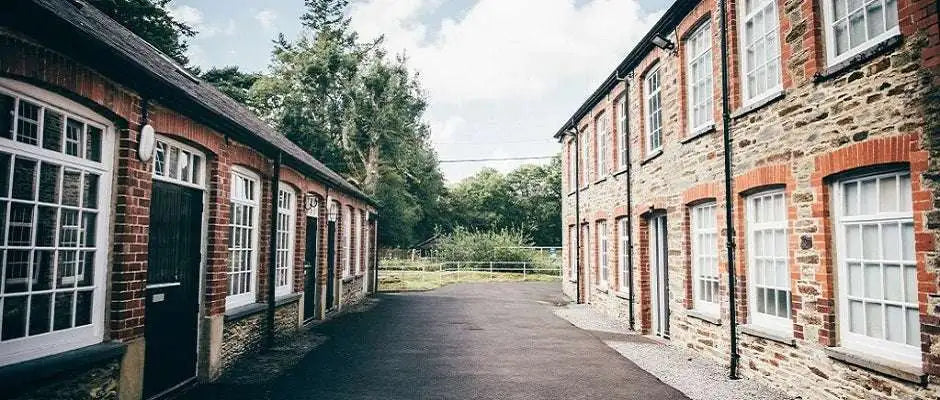
FelinFach Welsh Blankets
Welsh Blankets and Throws
We have a large collection of Welsh blankets ranging from the iconic Welsh Tapestry Blankets to smaller more contemporary throws and knee rugs. Our beautiful, soft and cosy traditional Welsh blankets are woven from 100% new UK wool. They are a fantastic source of warmth and comfort. These wool blankets vary in design, size and weight from heavyweight double weave reversible blankets to the traditional honeycomb (or waffle) weave blankets and knee rugs. All our blankets and throws for sale are made from British wool and are not vintage or used or second-hand blankets.
Woven in limited numbers
All of our blankets and throws are woven in Wales in limited numbers. They are designed and woven by with personal care and attention using traditional looms, some of which are over 100 years old. Some blankets and throws are woven on Dobcross 90 inch (2.3 metre) wide looms and others on narrower looms. None of our Welsh blankets for sale are mass produced. A Welsh blanket can be a beautiful addition to any home for many years to come.
Our wool throws are ‘soft to touch’ wool throws made from a blend of Welsh wool and British lambswool. Available in a variety of check or windowpane patterns. Our wool throws for sale are available in a variety of colours and sizes including the often referred to "knee rug". If you are looking for wool throws for sofas or beds, these wool throws will fit the bill!
WELSH TAPESTRY BLANKETS - HIRAETH**
Sadly, today we have very few tapestry blankets available as due to retirements of weavers and mill closures these blankets are not being woven.
Our Welsh tapestry blankets range is named ‘Hiraeth.’ Nothing says Hiraeth more than an iconic Welsh tapestry blanket. Welsh tapestry blankets together with throws, floor rugs and cushions are iconic Welsh products and are stunning additions to any home, traditional or contemporary. They can be used in different rooms of your home from a bedspread to a 'decoration' in your living areas. Looked after well, they will become a family heirloom of the future.
** Hiraeth is a Welsh concept of longing for home, which can be loosely translated as 'nostalgia', or, more commonly, 'homesickness'. Many of us Welsh claim 'hiraeth' is a word which cannot be translated, meaning more than solely "missing something" or "missing home."
Carthen or Carthenni (in plural) is the Welsh word for traditional Welsh blankets. In earlier days there were woven on narrow looms but subsequently on wider looms in traditional double weave patterns and colours. They are blankets made with several colours to produce a check design. They normally have fringes and are sometimes known as a Fringed Quilt.
Each blanket is woven on 1930's Dobcross looms. Each warp is threaded through the heddles by hand using the skills and processes of the last one hundred years. The traditional ‘double weave’ patterns produce reversible blankets that are practical, hard-wearing, and genuinely warm. In sizes ranging from Baby Blankets to Throws and King sizes, these blankets are suitable for use in living rooms as well as bedspreads. Our range of tapestry cushions complement each of these beautiful Welsh tapestry blankets
Although these blankets are universally known as Welsh tapestry blankets, they are not really tapestries at all. They are two layers of cloth, often known as a ‘double-weave’ cloth, each in a different colour and usually with a geometric pattern. The weaving itself requires a complicated stitching together of the two layers of cloth to produce one double-weave blanket. This double-cloth structure creates practical, hard-wearing, large, and heavy blankets with bold reversible patterns. For all these reasons, Welsh tapestry blankets have become famous the world over and are almost guaranteed to keep you warm in all weathers and will give an iconic reversible patterned blanket to decorate any home.
People Ask Us... Often!
What is a Welsh Blanket?
Welsh blankets (or ‘tapestry blankets’) are double sided and fully reversible blankets. They consist of two layers of fabric which are woven together producing contrasting colours on each side of the blankets. Nothing says ‘hiraeth’ more than an iconic Welsh tapestry blanket
What are Welsh blankets made of?
At FelinFach, all our blankets and throws are made from 100% new wool. Wool is a sustainable, environmentally friendly product and fits with our ethos of 'Natural, Traditional, Handmade'.
Are Welsh blankets warm?
Yes, they are warm, in particular the larger and heavier blankets and the tapestry blankets.
What is a Carthen?
This is the word (Carthenni as plural) for traditional Welsh blankets and in more modern times, specifically Welsh tapestry blankets.
What makes a Welsh blanket?
Two things. Firstly wool, there are no synthetics materials in a traditional Welsh blanket. Secondly, skilled crafts people who can operate age old looms to weave these beautiful blankets.
Are your blankets second hand?
Our FelinFach blankets are made with pure new wool. There are other businesses that specialise in vintage blankets.
What's the difference between a Welsh blanket and a throw?
These two names are often used to describe the similar products. At FelinFach, we believe that blankets are generally larger and heavier than throws. Blankets are a little more traditional, in particular tapestry blankets. Our throws are woven in many different colours and patterns.
Both our blankets and throws are a perfect balance of traditional and contemporary and are suitable for any room or home.
Are Welsh Blankets traditional and old fashioned?
We don't think so! Whilst our blankets are often in traditional patterns, we also have many in modern colours. Our throws in particular are designed in contemporary colours and patterns - a perfect addition to any room or home, traditional or contemporary.
About FelinFach
Located in Pembrokeshire Wales, our ethos is defined in the three words...
NATURAL TRADITIONAL HANDMADE.
- Hand woven iconic Welsh blankets.
We are a proud supporter of Americymru, the Campaign for Wool, Global Welsh and Red Dragon America.
Last updated 23rd April 2025

